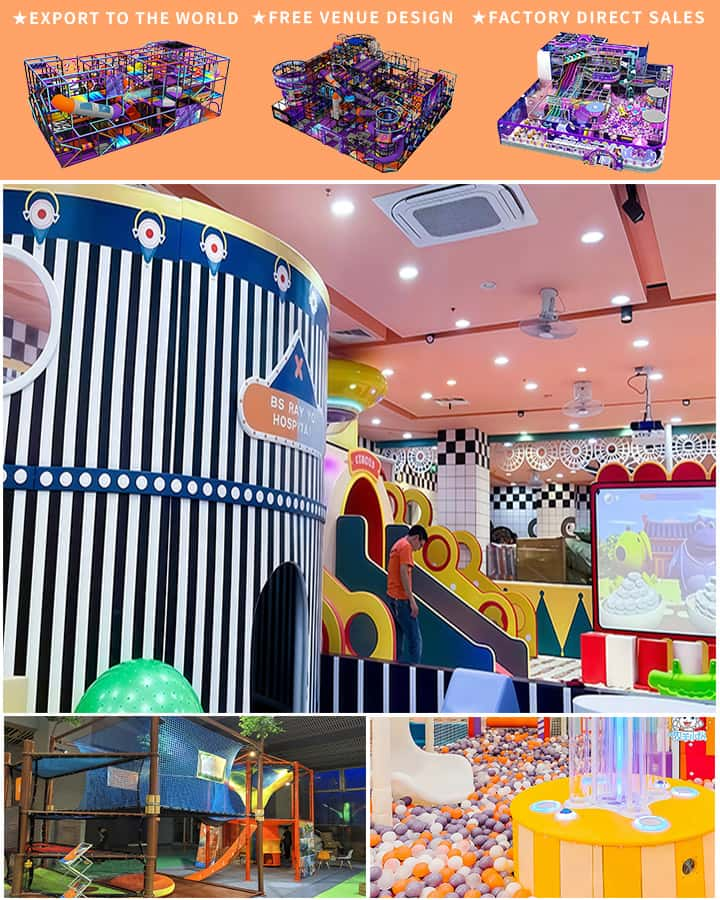When it comes to designing a safe, engaging, and environmentally friendly play area for children, wood kids’ playground equipment stands out as an exceptional choice. Unlike their metal or plastic counterparts, wooden playground structures offer a unique blend of durability, aesthetic appeal, and natural benefits that make them increasingly popular among parents, educators, and community planners alike. This article delves into the multifaceted advantages of incorporating wood into kids’ playgrounds and why it may just be the best material for fostering healthy, joyful, and imaginative play.
Environmental Sustainability: A Greener Choice
One of the primary reasons for opting for wooden playground equipment is its environmental sustainability. Wood is a renewable resource, especially when sourced from sustainably managed forests. Unlike plastic, which is derived from petroleum and can take hundreds of years to decompose, wood is biodegradable and has a significantly lower environmental footprint. Moreover, using wood in playground construction helps sequester carbon, contributing positively to efforts aimed at mitigating climate change.
Natural Beauty and Enhanced Aesthetics

Wooden playgrounds boast a timeless charm that synthetic materials often lack. The natural grains, textures, and warm hues of wood create a welcoming and visually pleasing environment that seamlessly integrates with natural landscapes. This aesthetic appeal can transform a simple playground into a picturesque retreat where children can immerse themselves in nature while enjoying their playtime activities. Furthermore, many people find wooden playgrounds to have a more ‘homey’ feel compared to the cold, sterile appearance of metal and plastic structures.
Safety and Durability
Contrary to common misconceptions that wood may be less durable, high-quality wooden playground equipment is designed to withstand rigorous use. When properly treated and maintained, wood can last for many years without losing its structural integrity. Modern treatments and finishes also enhance the wood’s resistance to rot, insects, and weather, ensuring long-lasting performance. In terms of safety, wood provides a relatively softer landing surface in the event of a fall, thereby reducing the risk of severe injuries compared to hard surfaces like metal or concrete.
Encouraging Creative Play and Imagination
Wooden playground equipment naturally lends itself to imaginative play. Children are more likely to engage in creative activities such as pretending to be pirates on a wooden ship or exploring a castle when surrounded by the organic and versatile forms of wood. Unlike plastic, which often comes in predefined shapes and colors, wood can be easily customized and painted, allowing for endless possibilities and fostering children’s creativity and problem-solving skills.
Healthier Play Environment
Wood is hypoallergenic and does not retain heat as much as metal, making it a safer option for children with allergies or sensitivities. Additionally, wooden surfaces tend to stay cooler to the touch, providing a more comfortable experience during hot summer days. This aspect ensures that kids can enjoy their outdoor playtime without discomfort or potential health hazards.
In conclusion, wood kids’ playground equipment offers a host of benefits that extend beyond mere play value. From promoting environmental sustainability and enhancing aesthetic appeal to ensuring safety, durability, and encouraging creative play, wood proves to be an outstanding material for constructing playgrounds. As awareness about these advantages grows, it is likely that we will see an increasing number of wooden playgrounds sprouting up in parks, schools, and backyards, enriching the lives of children and communities across the globe. Investing in wooden playground equipment is not just a choice for today but a legacy for a greener, more imaginative future.




